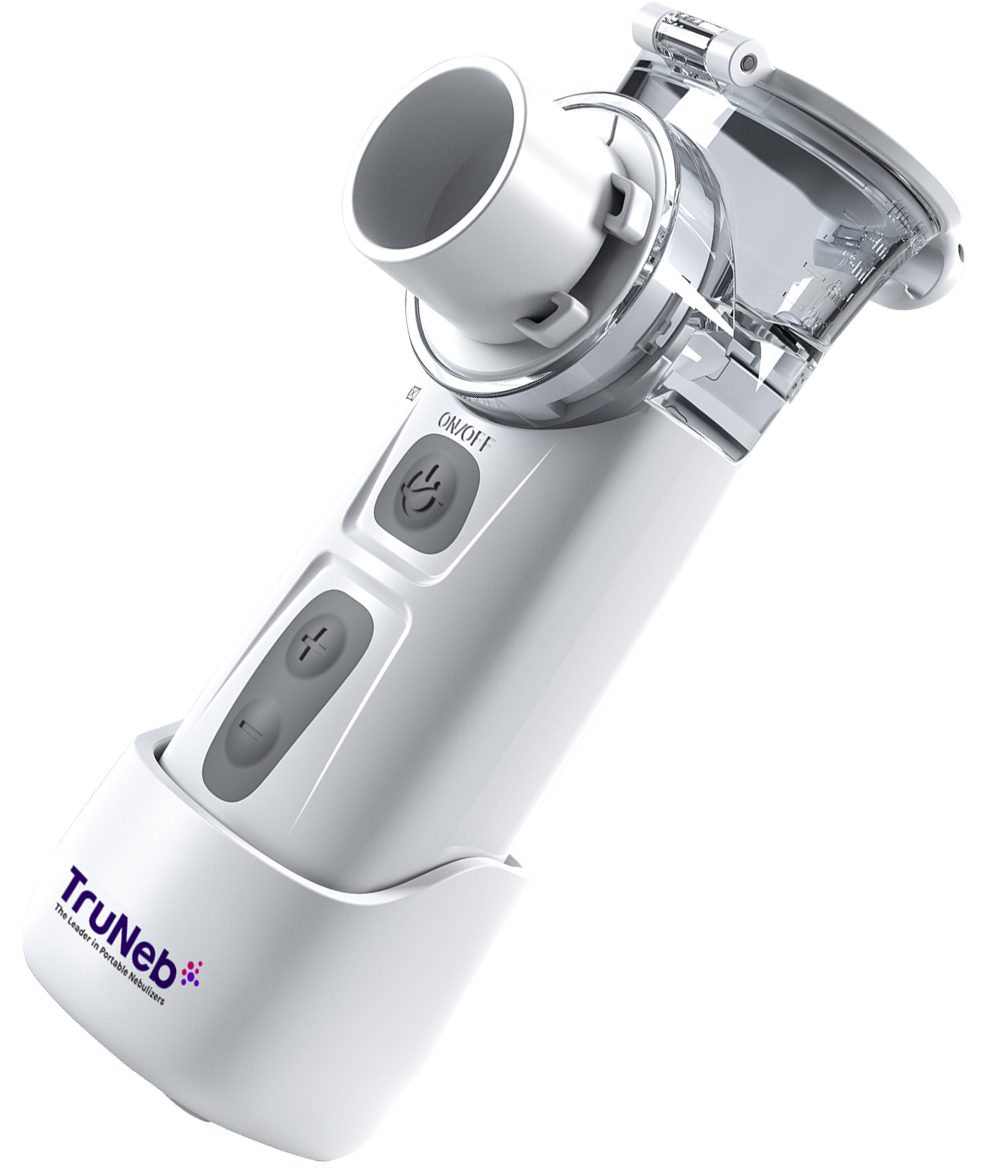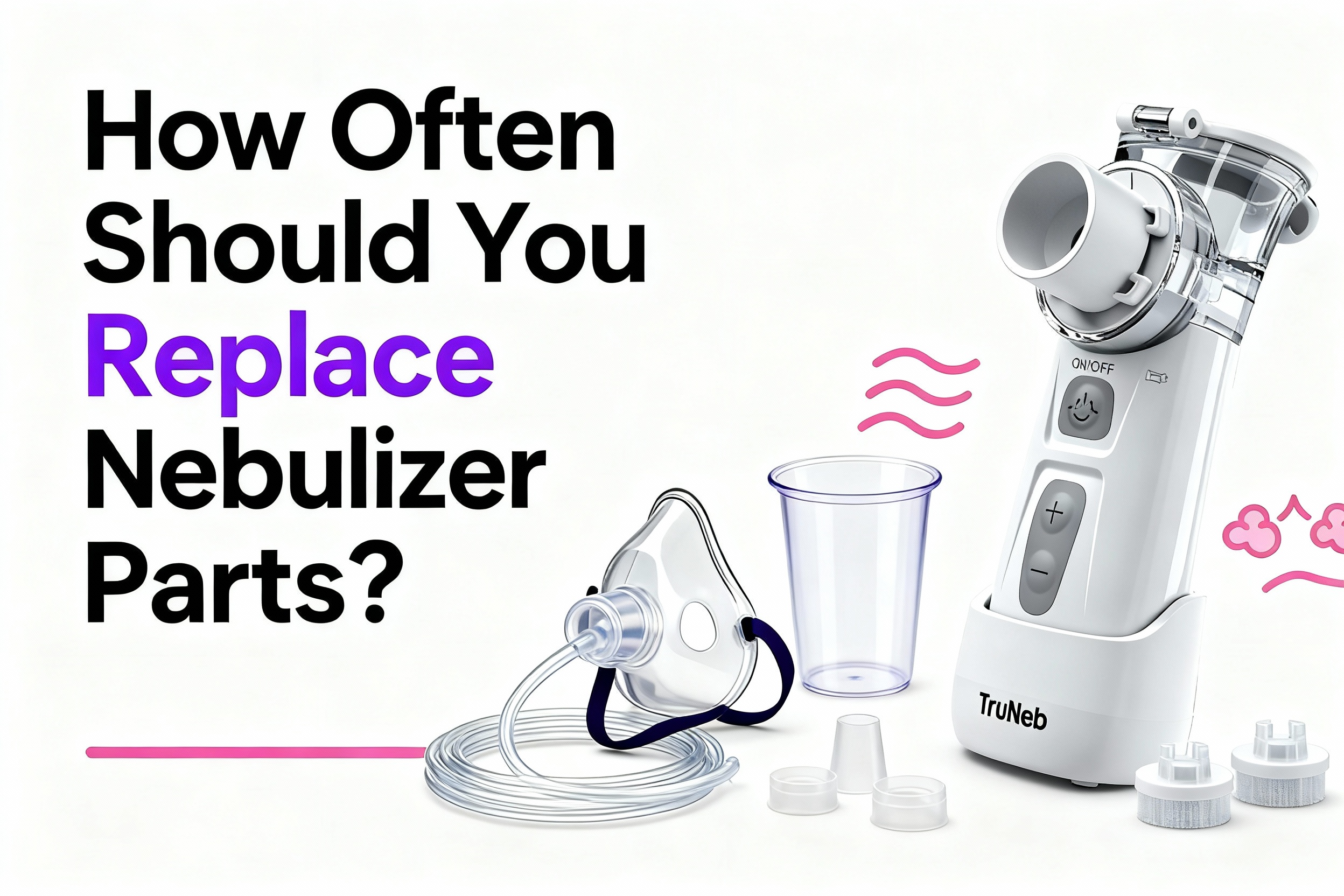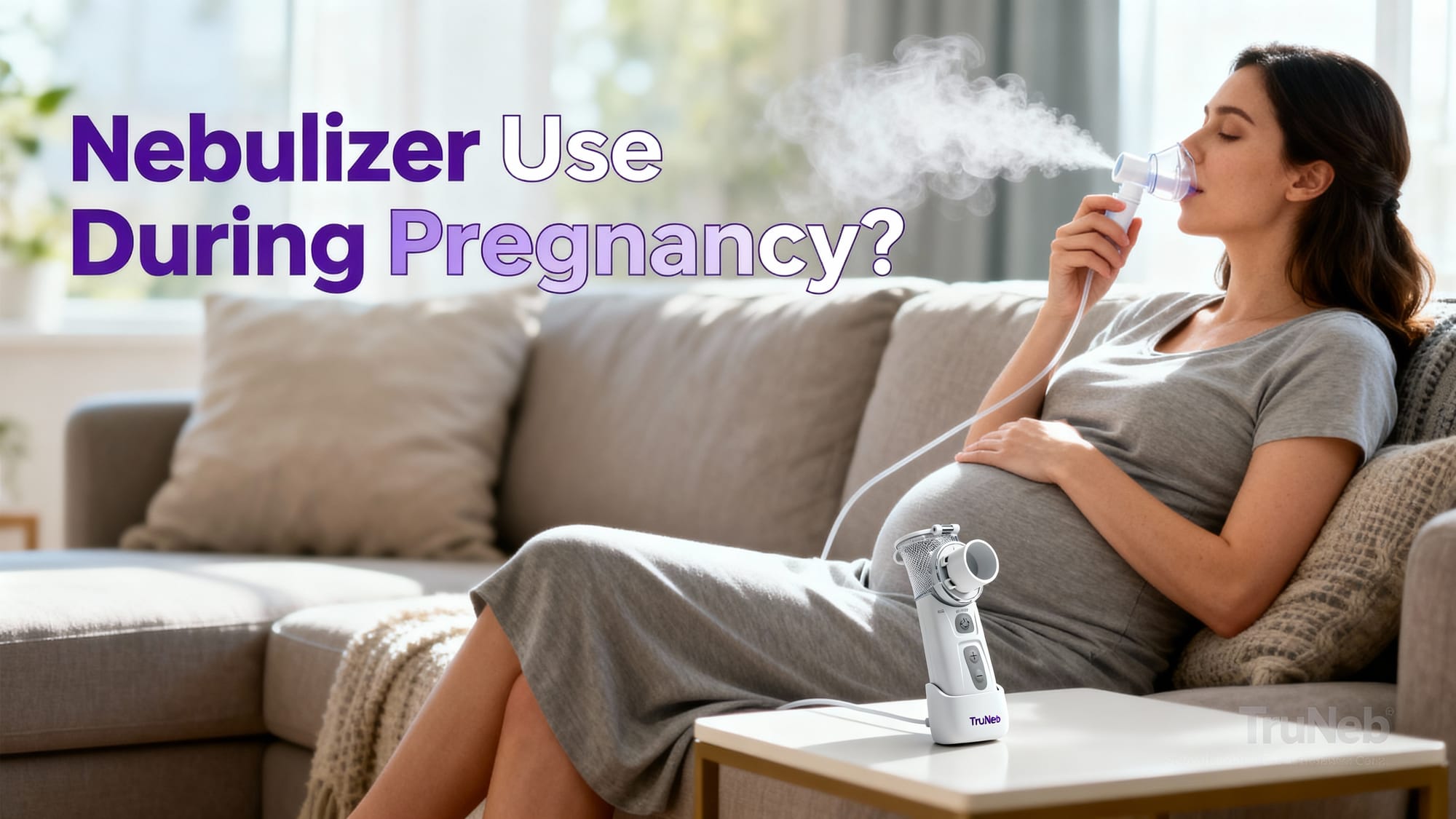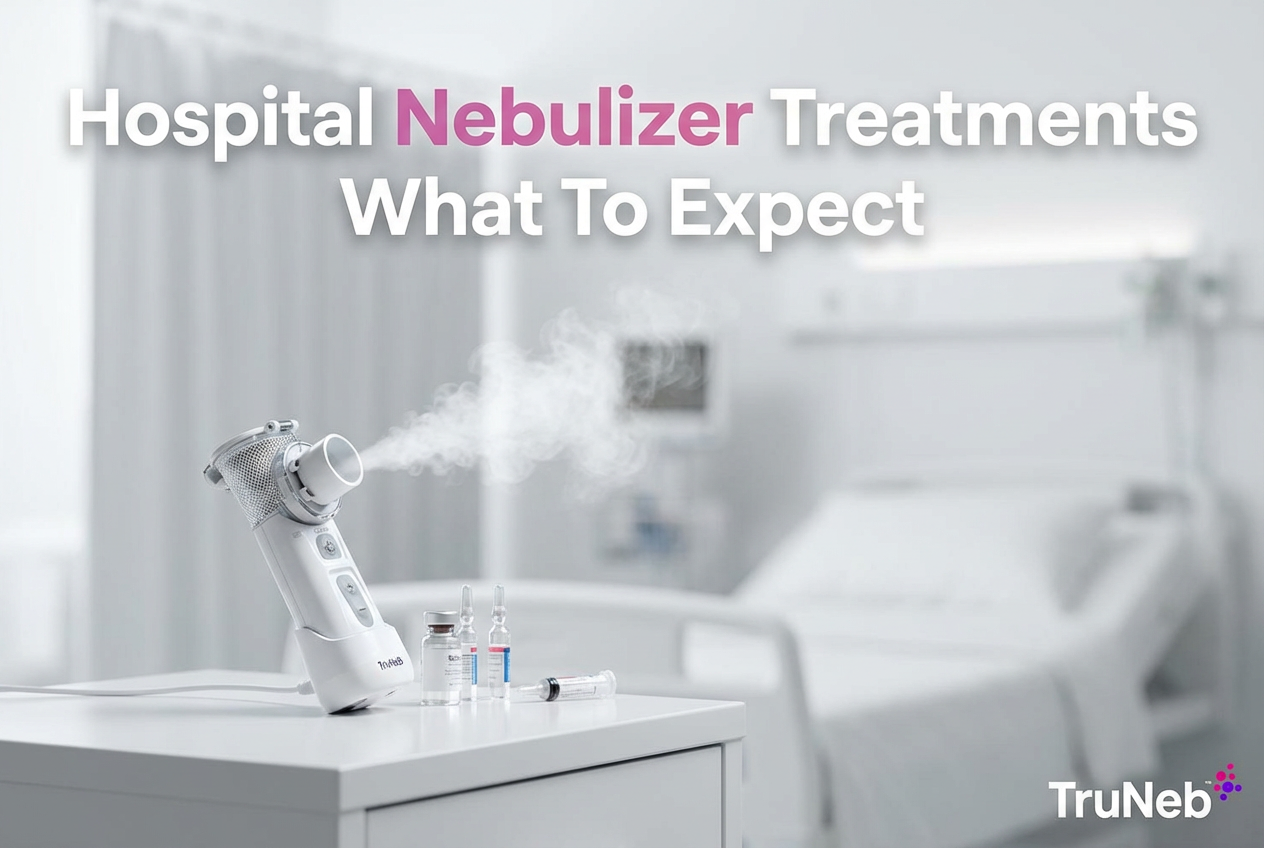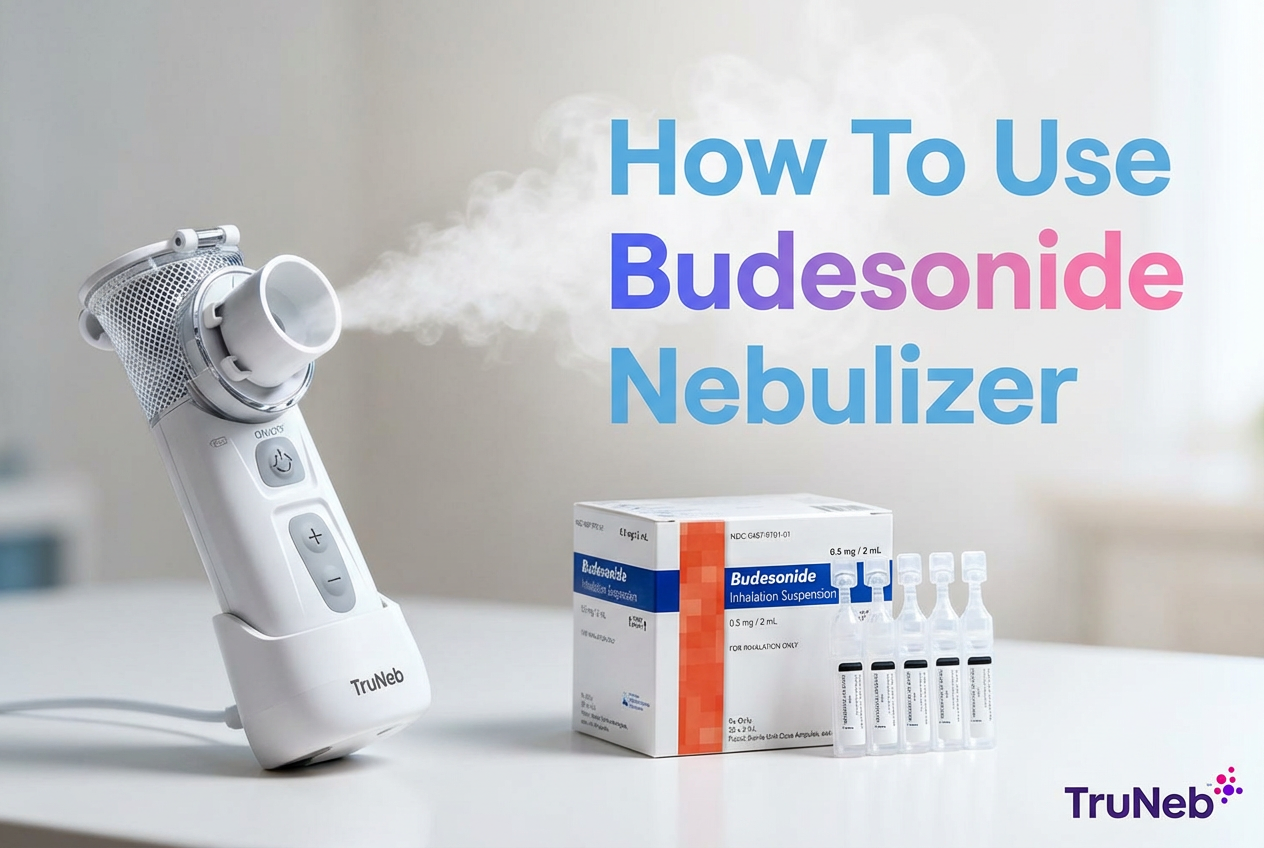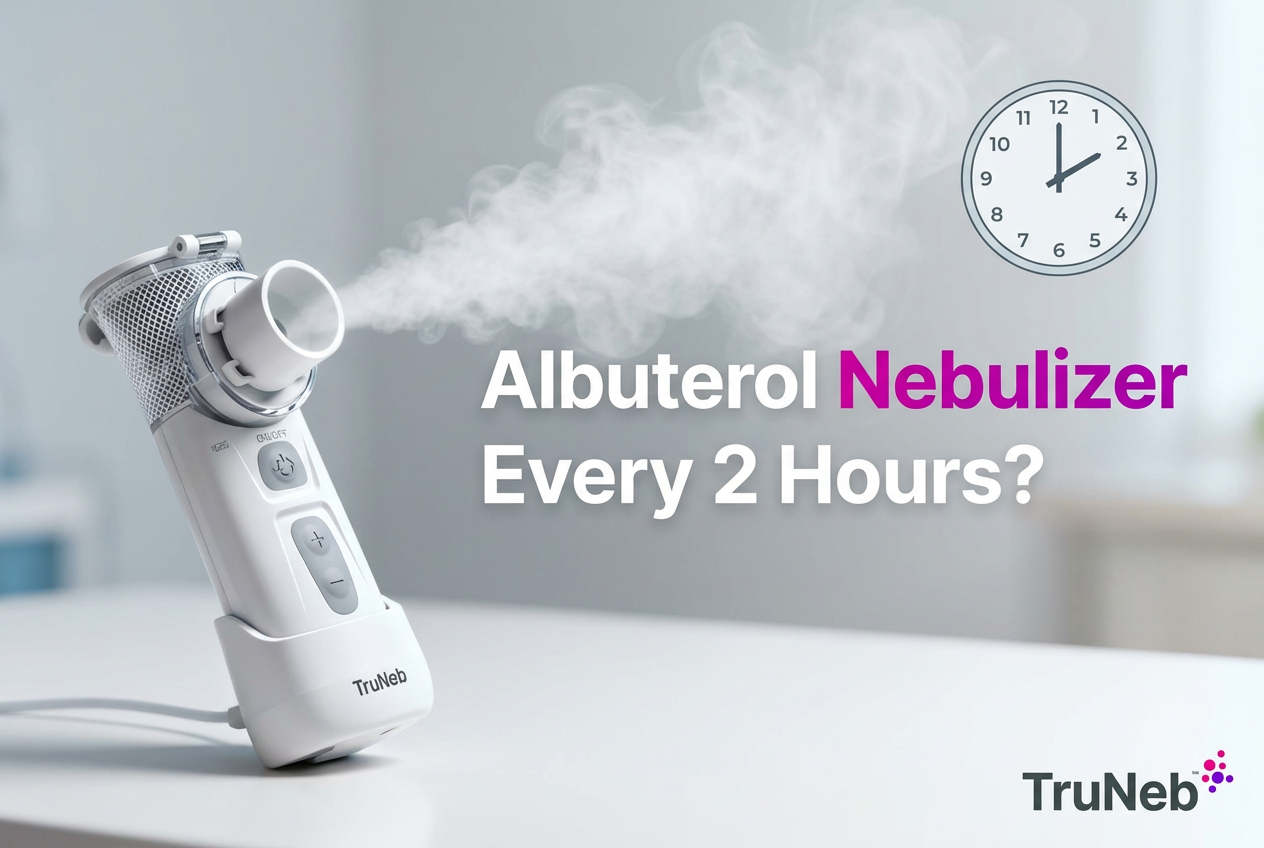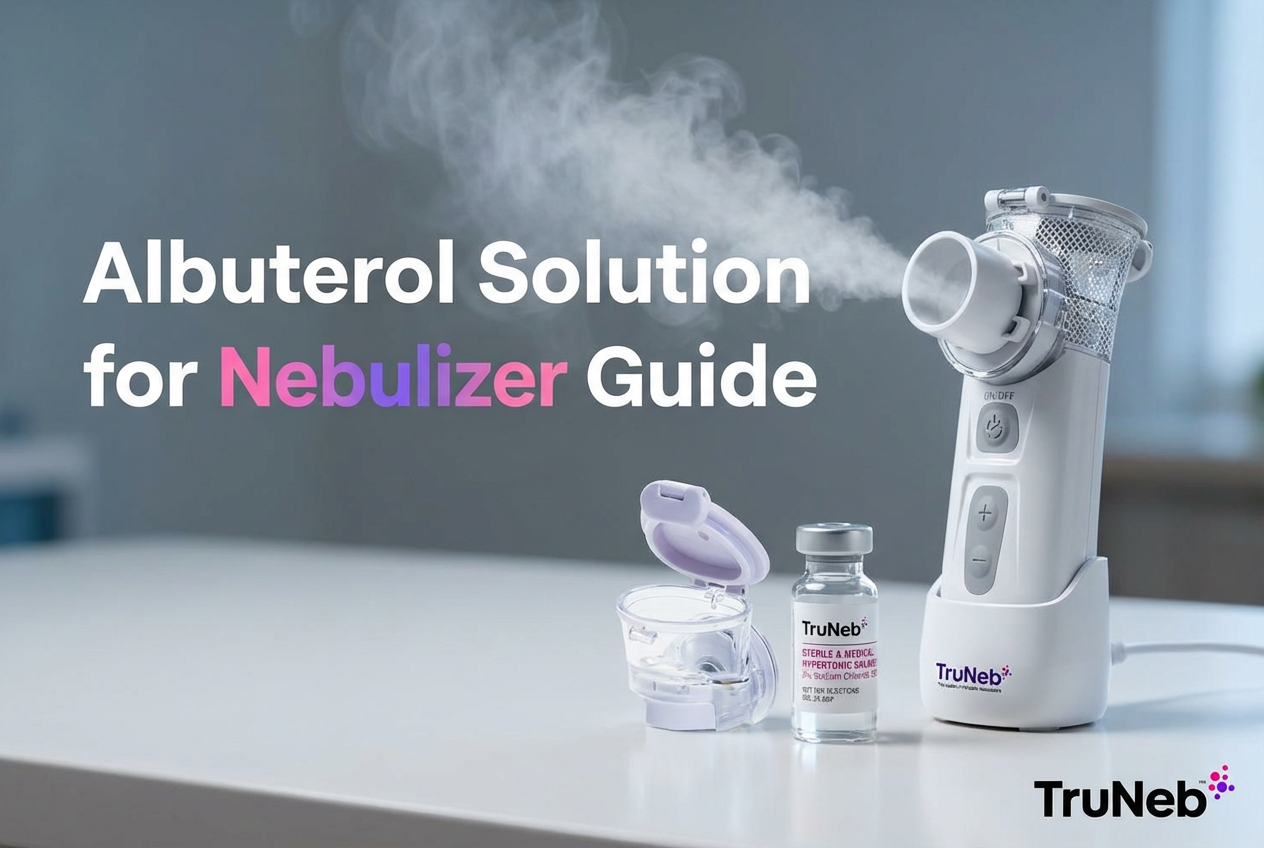On this page
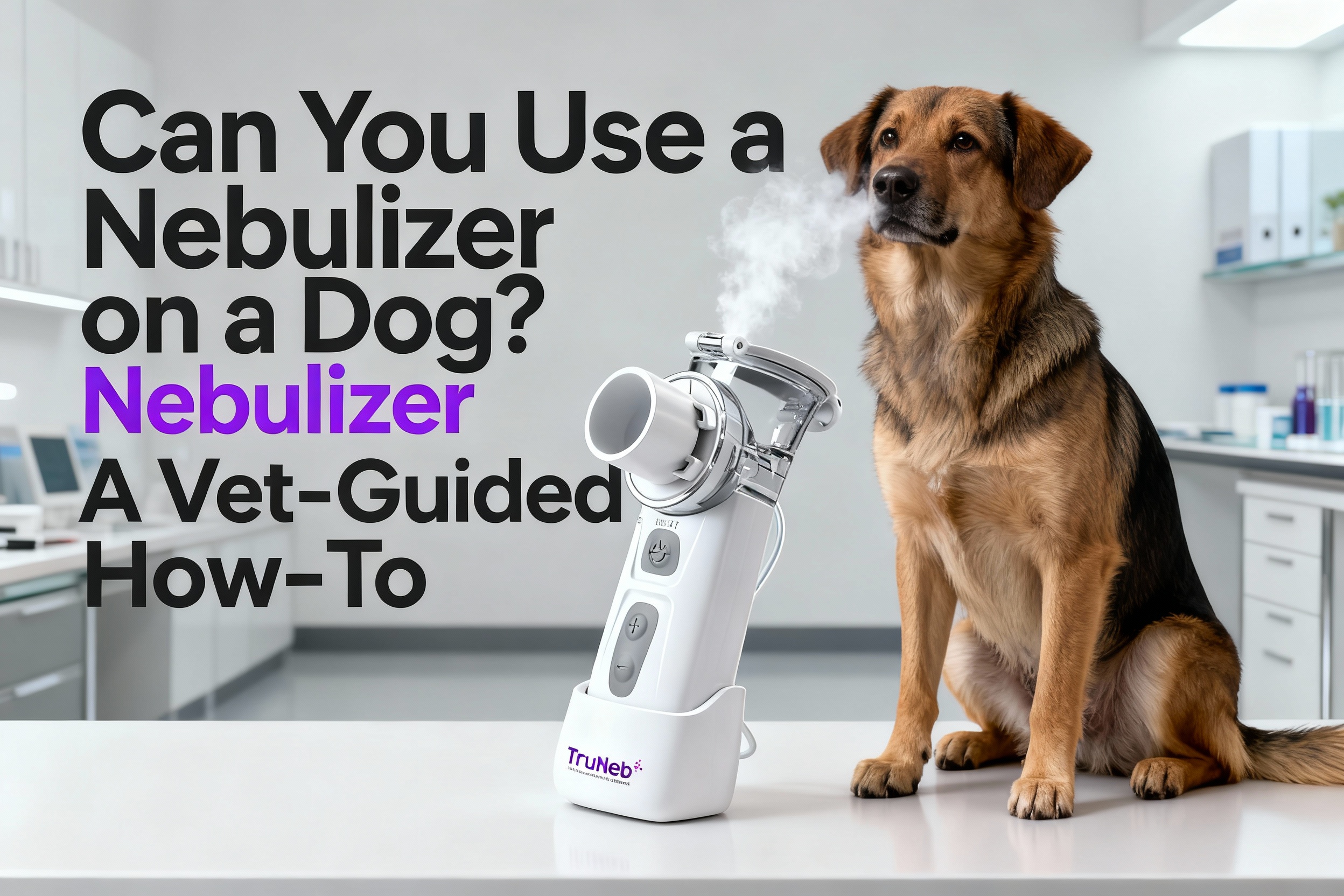
Can You Use a Nebulizer on a Dog?
Yes. Dogs can safely use a nebulizer when a vet prescribes the medication and plan. The machine turns liquid medicine into a fine mist your dog breathes in, which can help open airways, loosen mucus, and deliver drugs directly to the lungs.
In short: nebulizers can help dogs with certain breathing problems, but they should be used with vet guidance.
⚠️ If your dog has severe breathing trouble, open‑mouth breathing at rest, blue or gray gums, or collapses, seek emergency veterinary care immediately.
What Is a Nebulizer and How It Helps Dogs
A nebulizer is a small machine that turns liquid medicine into a fine mist. Your dog breathes the mist through a mask or chamber so the tiny droplets can reach deep into the lungs. This can help relieve coughing, wheezing, and chest congestion.
Key idea: a nebulizer turns liquid medicine into a fine mist so your dog can breathe it deep into the lungs.
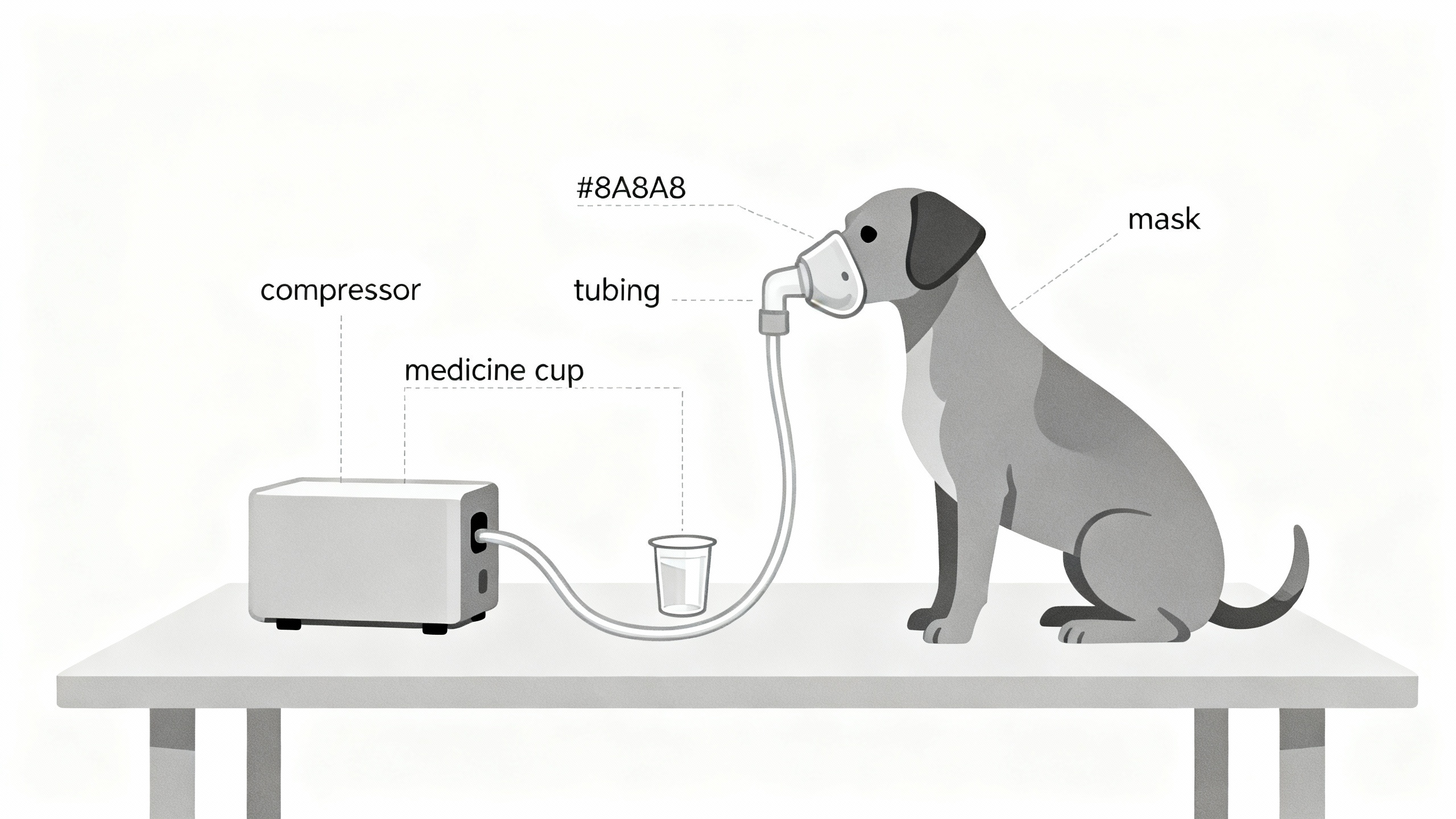
When Do Dogs Need Nebulizer Treatment?
Vets sometimes recommend nebulization for:
- Pneumonia: helps deliver antibiotics or saline to the lungs and loosen thick mucus.
- Chronic bronchitis or canine asthma: bronchodilators can open airways and ease wheeze.
- Kennel cough (tracheobronchitis): saline mist can soothe irritated airways and thin secretions.
- Collapsed trachea or other airway irritation: moisture can improve comfort.
- Aspiration risks (e.g., megaesophagus): part of a vet’s plan to help clear lungs.
Signs Your Dog May Benefit
- Ongoing cough, especially with mucus
- Wheezing or a whistling sound when breathing
- Fast, shallow breaths at rest
- Labored breathing or tiring quickly
- Open‑mouth breathing at rest
If you notice these signs, see your veterinarian. Your vet might add nebulizer therapy to your dog’s treatment plan.
Rule of thumb: a nebulizer is for diagnosed airway and lung issues, not for unexplained trouble breathing—get a vet exam first.
If your vet recommends home treatment, here’s how to do it safely.
How to Use a Nebulizer for Your Dog (Step-by-Step)
If your vet has prescribed at‑home nebulizer therapy, follow these steps:
- Prepare the equipment: set the compressor on a flat surface. Attach tubing and the medicine cup. Check that parts are clean and dry.
- Add the medication: pour the prescribed medicine or sterile saline into the cup. Close it tightly.
- Calm and position your dog: choose a quiet spot. Sit with your dog on a bed or in your lap. You can place a tiny smear of peanut butter on the rim of the mask as a distraction.
- Apply the mask and start: hold the mask gently over your dog’s muzzle to make a light seal. Turn the machine on. Let your dog breathe normally.
- Time the session: most treatments run about 5–10 minutes, or until the mist stops, as directed by your vet.
- Finish and praise: turn off the machine, remove the mask, and reward your dog.
- Clean parts after use: wash the mask and medicine cup (details below) so they’re ready next time.
Note: a standard human nebulizer compressor can work. A portable mesh nebulizer like TruNeb™ also produces a fine mist. Ask your veterinarian which device type is appropriate for your dog and prescribed meds.
In short: set up clean equipment, keep your dog calm, follow your vet’s plan, and run the mist for about 5–10 minutes.
Pro Tips for Calmer Sessions
- Let your dog sniff the mask and hear the machine while it’s off first.
- Use a pet‑sized or pediatric mask so the mist actually reaches the lungs.
- If your dog won’t accept a mask, run the nebulizer in a small, well‑ventilated room or carrier so some mist is still inhaled (less efficient, but can help).
- Stay close, speak softly, and keep each session short and positive.
Quick tip: short, calm practice sessions build better tolerance over time.
Cleaning and Maintenance
Keeping gear clean helps prevent new infections.
- After each session: wash the mask and medicine cup with warm water and mild soap. Rinse and air‑dry on a clean towel.
- Daily: do a thorough wash and let all parts dry fully.
- 1–2 times per week: disinfect parts (not the compressor) by soaking 30–60 minutes in 1 part white vinegar to 3 parts water. Rinse and air‑dry.
- To dry tubing: attach it to the compressor and run air for a few minutes.
- Use 0.9% sterile saline for treatments; don’t substitute contact lens saline, tap water, or distilled water.
- Don’t boil plastic parts unless the maker says it’s safe.
Bottom line: clean, dry parts equal safer, more effective treatments.
What Medication or Solution Can You Use in a Dog’s Nebulizer?
Only use vet‑prescribed medications or sterile 0.9% saline in a dog’s nebulizer.
Caption: Common nebulizer medications/solutions for dogs (vet‑prescribed only).
| Nebulizer medication/solution | What it does | Key notes |
|---|---|---|
| Albuterol (salbutamol) | Opens airways (bronchodilator) | Vet‑prescribed only; can cause restlessness or faster heart rate. |
| Sterile saline (0.9%) | Moisturizes airways, thins mucus | Very safe; can be used alone or after meds. |
| Antibiotics (e.g., gentamicin, amikacin) | Targets bacterial lung infections | Prescription only; inhaled route can reduce some systemic effects. |
| Inhaled steroid (e.g., budesonide) | Lowers airway inflammation | Vet‑directed; used in certain chronic conditions. |
| Mucolytic (e.g., N‑acetylcysteine) | Breaks up very thick mucus | Use only if prescribed; can be irritating if misused. |
Do not put essential oils or human OTC inhalants in your dog’s nebulizer—these can be harmful. Don’t use contact lens saline; use 0.9% sterile saline.
Is Albuterol Safe for Dogs?
Albuterol can be safe for dogs when a veterinarian prescribes the correct dose and frequency. It can quickly ease wheeze by opening airways. Side effects can include jitteriness or a faster heart rate, so follow your vet’s plan closely and report any concerning changes.
Simple rule: never use albuterol without your vet’s direction.
Precautions and Side Effects
⚠️ If your dog has severe breathing trouble, blue‑tinged gums, faints, or breathes with an open mouth at rest, seek emergency care now.
- Watch your dog during and after treatment. Stop and call your vet if you see severe agitation, vomiting, collapse, or blue‑tinged gums.
- Dogs with heart disease need extra caution, especially with bronchodilators that can raise heart rate.
- Caregivers with heart or lung conditions should avoid breathing medicated mist. Sit upwind and ventilate the room.
- Use only the medication and dose your vet prescribed. Don’t improvise.
- Keep the equipment clean to avoid introducing germs into the airways.
Guideline: most dogs tolerate nebulizers well, but monitoring keeps them safe.
Safety note
Nebulizer use should be part of a vet’s plan for a diagnosed condition. Talk to your vet before trying a new medication or changing a dose.
Nebulizer vs. Other Breathing Treatments for Dogs
Caption: How nebulizers compare to other breathing support methods.
| Method | What it does | Best use case | Notes |
|---|---|---|---|
| Nebulizer | Continuous medicated mist to lungs | Pneumonia, bronchitis, asthma flares | Great for moisture and deep delivery. |
| Inhaler + spacer (e.g., AeroDawg) | Quick puffs of medicine to lungs | Ongoing asthma/bronchitis management | Some dogs prefer this; needs training. |
| Humidifier/steam | Adds moisture only (no meds) | Mild nasal congestion | Comfort measure; not a treatment for lung disease. |
| Oxygen therapy | Raises oxygen levels | Severe breathing distress | Clinic or vet‑guided home setup. |
Nebulizers deliver medication; humidifiers only add moisture.
Frequently Asked Questions
Tap or click a question below to see the answer:
Yes — the compressor unit can work for pets. Use only vet-prescribed medication and a mask that fits your dog’s face. Clean and disinfect parts before and after each use.
Follow your veterinarian’s plan. Many dogs receive treatments 2–3 times daily during flares for about 5–10 minutes per session. Don’t increase frequency or duration without vet guidance.
Desensitize slowly with short, calm practice sessions and treats. If needed, run the nebulizer in a small, ventilated room or carrier so some mist is still inhaled. If your dog panics, stop and ask your vet about alternatives.
No. It can soothe airways and help clear mucus, but it doesn’t cure the infection. Your vet may add other treatments as needed.
Yes. Drugs like albuterol, inhaled steroids, or antibiotics require a veterinary prescription. You can buy a device without a prescription, but not the medications.
Wrap‑Up: Helping Your Dog Breathe Easier
Used the right way, a nebulizer can help your dog breathe more comfortably while other treatments do their job. Work with your veterinarian, follow the steps, keep the gear clean, and watch your dog’s response. If symptoms don’t improve, check with your vet.
One‑liner: vet‑guided nebulizer therapy can be a simple, home routine that supports healing.
Disclaimer: This article is for informational purposes only and isn’t a substitute for professional veterinary advice, diagnosis, or treatment. Always consult your veterinarian about your dog’s health and treatments.

